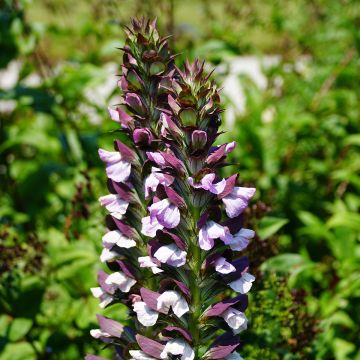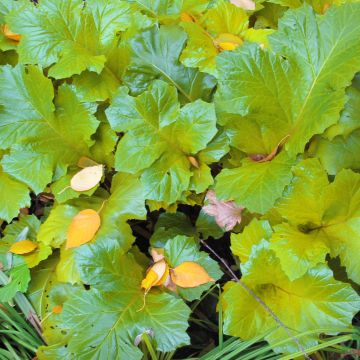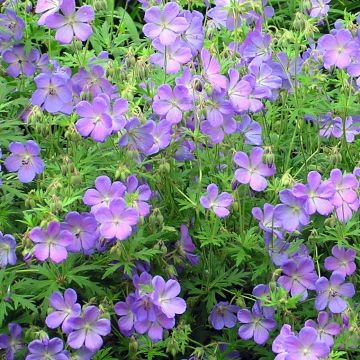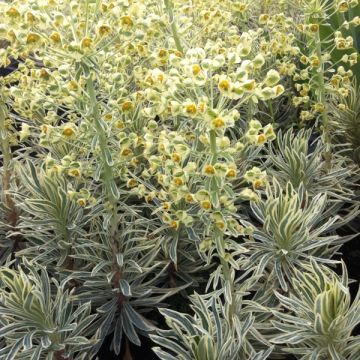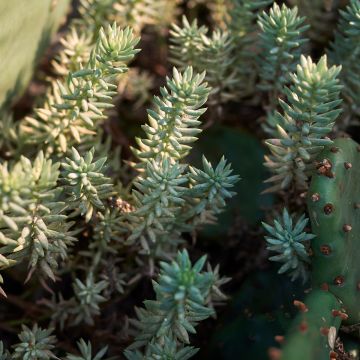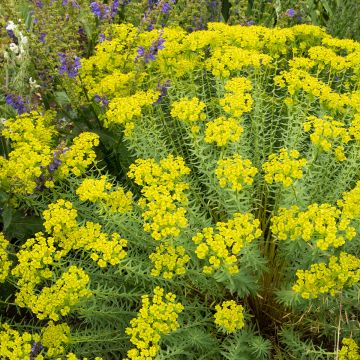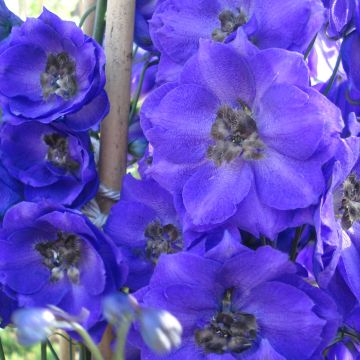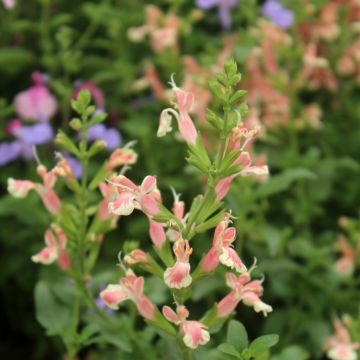

Acanthus hungaricus White Lips - Bear's Breech
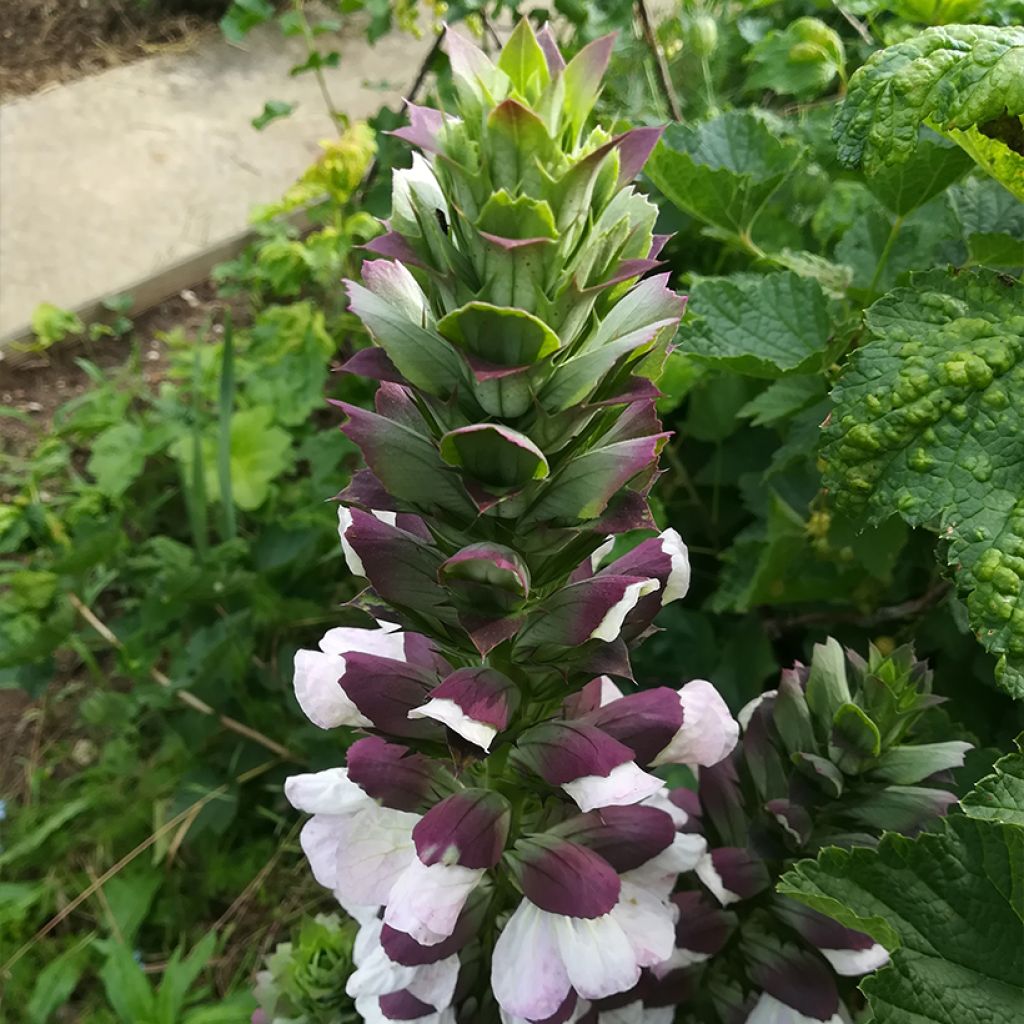

Acanthus hungaricus White Lips - Bear's Breech


Acanthus hungaricus White Lips - Bear's Breech


Acanthus hungaricus White Lips - Bear's Breech


Acanthus hungaricus White Lips - Bear's Breech
Acanthus hungaricus White Lips - Bear's Breech
Acanthus hungaricus White Lips
Hungarian Bear's Breech, Long-Leaved Bear's Breech, Hungarian bear’s breech
This item cannot be shipped to the selected country
Delivery charge from €5.90
More information
Schedule delivery date,
and select date in basket
This plant carries a 12 months recovery warranty
More information
We guarantee the quality of our plants for a full growing cycle, and will replace at our expense any plant that fails to recover under normal climatic and planting conditions.
From €5.90 for pickup delivery and €6.90 for home delivery
Express home delivery from €8.90.
Does this plant fit my garden?
Set up your Plantfit profile →
Description
The Acanthus hungaricus 'White Lips' is a distinctly bicoloured novelty, with prominent white lips topped with mauve bracts from July to August. It is a medium-sized perennial with an upright habit and narrower and more deeply cut dark green foliage than the species. 'White Lips' Hungarian acanthus is easy to maintain and grows quickly. Plant it en masse on the edge of undergrowth or a patio border in rich, well-drained soil in a warm spot near a wall or rockery.
The Acanthus hungaricus, despite its name, is not found in Hungary today but can be found in some Balkan countries. It is a close relative of Acanthus mollis, found in forests in southern France, from the acanthus family. It is distinguished by its extraordinary floribundance and preference for sunny locations.
The 'White Lips' variety is a deciduous herbaceous perennial with a dense, upright habit that can reach 80 cm (32in) in height and 70 cm (28in) in spread. It produces long, narrow, shiny dark green leaves, deeply lobed but non-spiny. In June-August, while the foliage tends to wither, large spike-like flowers appear, reaching 80 cm (32in) above the ground. These spikes bear large, crumpled, bilabiate flowers, 5 cm (2in) long, pure white. Each flower is topped with a spiny mauve bract, giving a two-tone appearance to the flower head. These bracts add charm to this impressive flowering. Acanthus plants attract large pollinating insects such as bumblebees or carpenter bees. The fruits are shiny capsules containing large seeds. The foliage completely disappears after flowering, reappearing in autumn and remaining evergreen throughout winter. This plant spreads from a stump with large fleshy roots capable of storing water and food reserves during dry periods. It tolerates chalky and rocky soils. Planting in heavy soil and cold climates is not recommended!
The 'Hot Lips' Hungarian acanthus is the hardiest species of the genus and is easy to grow. This truly magnificent plant cannot be ignored. In a dry garden, it is a robust and reliable perennial that pairs well with the blue blooms of Caryopteris, Ceratostigma griffithii, Perowskia 'Blue Spire', or Lobelia laxiflora and Epilobium canum in warm tones. It is ideal for adding verticality and volume to perennial plant beds in all regions. It is also a beautiful focal plant in a natural setting or a large container on the terrace. Like its relatives, the Hungarian acanthus can withstand root competition from old trees such as oaks or pines. It can naturalise in old gardens and cover large areas if it finds the right conditions.
Report an error about the product description
Acanthus hungaricus White Lips - Bear's Breech in pictures




Flowering
Foliage
Plant habit
Botanical data
Acanthus
hungaricus
White Lips
Acanthaceae
Hungarian Bear's Breech, Long-Leaved Bear's Breech, Hungarian bear’s breech
Central Europe
Other Acanthus
Planting and care
The Acanthus hungaricus 'White Lips' is hardy up to approximately -15°C (5°F). This plant grows quickly and adapts easily to all soil types, even clayey and dry soil. During autumn and spring, it prefers cool, well-drained and reasonably fertile soil and can tolerate summer drought during its vegetative rest period. It accepts limestone well. This species prefers a sunny exposure sheltered from the wind but can also tolerate partial shade, where it will grow taller but be less floriferous. Attention, like all Acanthus plants, does not like being moved. If you don't want it to take over, cut the flower stalk as soon as fruiting is finished or remove the fruits: be careful of the spines; it is advisable to wear gloves! Like all other Acanthus plants, they are susceptible to powdery mildew and prone to attacks from slugs and snails.
Planting period
Intended location
Care
-
, onOrder confirmed
Reply from on Promesse de fleurs
Summer flowering perennials
Haven't found what you were looking for?
Hardiness is the lowest winter temperature a plant can endure without suffering serious damage or even dying. However, hardiness is affected by location (a sheltered area, such as a patio), protection (winter cover) and soil type (hardiness is improved by well-drained soil).

Photo Sharing Terms & Conditions
In order to encourage gardeners to interact and share their experiences, Promesse de fleurs offers various media enabling content to be uploaded onto its Site - in particular via the ‘Photo sharing’ module.
The User agrees to refrain from:
- Posting any content that is illegal, prejudicial, insulting, racist, inciteful to hatred, revisionist, contrary to public decency, that infringes on privacy or on the privacy rights of third parties, in particular the publicity rights of persons and goods, intellectual property rights, or the right to privacy.
- Submitting content on behalf of a third party;
- Impersonate the identity of a third party and/or publish any personal information about a third party;
In general, the User undertakes to refrain from any unethical behaviour.
All Content (in particular text, comments, files, images, photos, videos, creative works, etc.), which may be subject to property or intellectual property rights, image or other private rights, shall remain the property of the User, subject to the limited rights granted by the terms of the licence granted by Promesse de fleurs as stated below. Users are at liberty to publish or not to publish such Content on the Site, notably via the ‘Photo Sharing’ facility, and accept that this Content shall be made public and freely accessible, notably on the Internet.
Users further acknowledge, undertake to have ,and guarantee that they hold all necessary rights and permissions to publish such material on the Site, in particular with regard to the legislation in force pertaining to any privacy, property, intellectual property, image, or contractual rights, or rights of any other nature. By publishing such Content on the Site, Users acknowledge accepting full liability as publishers of the Content within the meaning of the law, and grant Promesse de fleurs, free of charge, an inclusive, worldwide licence for the said Content for the entire duration of its publication, including all reproduction, representation, up/downloading, displaying, performing, transmission, and storage rights.
Users also grant permission for their name to be linked to the Content and accept that this link may not always be made available.
By engaging in posting material, Users consent to their Content becoming automatically accessible on the Internet, in particular on other sites and/or blogs and/or web pages of the Promesse de fleurs site, including in particular social pages and the Promesse de fleurs catalogue.
Users may secure the removal of entrusted content free of charge by issuing a simple request via our contact form.
The flowering period indicated on our website applies to countries and regions located in USDA zone 8 (France, the United Kingdom, Ireland, the Netherlands, etc.)
It will vary according to where you live:
- In zones 9 to 10 (Italy, Spain, Greece, etc.), flowering will occur about 2 to 4 weeks earlier.
- In zones 6 to 7 (Germany, Poland, Slovenia, and lower mountainous regions), flowering will be delayed by 2 to 3 weeks.
- In zone 5 (Central Europe, Scandinavia), blooming will be delayed by 3 to 5 weeks.
In temperate climates, pruning of spring-flowering shrubs (forsythia, spireas, etc.) should be done just after flowering.
Pruning of summer-flowering shrubs (Indian Lilac, Perovskia, etc.) can be done in winter or spring.
In cold regions as well as with frost-sensitive plants, avoid pruning too early when severe frosts may still occur.
The planting period indicated on our website applies to countries and regions located in USDA zone 8 (France, United Kingdom, Ireland, Netherlands).
It will vary according to where you live:
- In Mediterranean zones (Marseille, Madrid, Milan, etc.), autumn and winter are the best planting periods.
- In continental zones (Strasbourg, Munich, Vienna, etc.), delay planting by 2 to 3 weeks in spring and bring it forward by 2 to 4 weeks in autumn.
- In mountainous regions (the Alps, Pyrenees, Carpathians, etc.), it is best to plant in late spring (May-June) or late summer (August-September).
The harvesting period indicated on our website applies to countries and regions in USDA zone 8 (France, England, Ireland, the Netherlands).
In colder areas (Scandinavia, Poland, Austria...) fruit and vegetable harvests are likely to be delayed by 3-4 weeks.
In warmer areas (Italy, Spain, Greece, etc.), harvesting will probably take place earlier, depending on weather conditions.
The sowing periods indicated on our website apply to countries and regions within USDA Zone 8 (France, UK, Ireland, Netherlands).
In colder areas (Scandinavia, Poland, Austria...), delay any outdoor sowing by 3-4 weeks, or sow under glass.
In warmer climes (Italy, Spain, Greece, etc.), bring outdoor sowing forward by a few weeks.



































